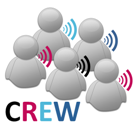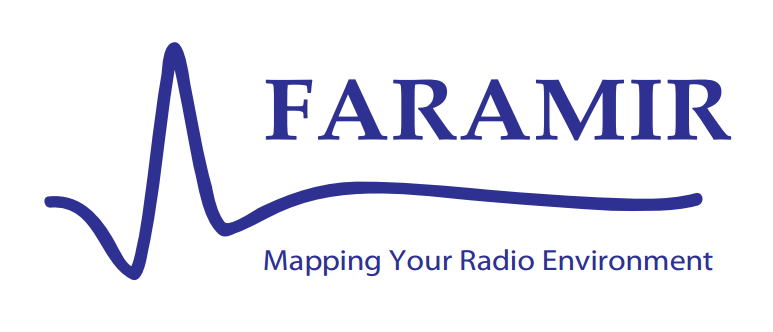|
|

Independent living of senior citizens is one of the main challenges linked to the ageing population, due to the impact on the:
- life of the elderly people
- national health systems
- insurance companies
- relatives and
- care-givers.
Senior citizens may suffer from a number of diseases, including the decline in cardiopulmonary conditions, weaker muscle functions and a declined neuromuscular control of the movements, which result in a higher risk of fall and a higher vulnerability for cardiovascular and pulmonary diseases. With respect to cognitive functions, senior citizens may suffer from a decline of memory function, less ability to orientate and a declined ability to cope with complex situations.
Mild dementia is another disease affecting this population, which requires either the institutionalization or the constant support from care-givers. eWALL will be an affordable, easy-to-install prefabricated wall that can be mounted on an existing wall and includes, into the background, all the ICT technology needed to enable a number of services for the senior citizen to cover the major ontologies of Active and Healthy Ageing.
The project will carry out high-risk and multi-disciplinary research and will have a large-scale demonstrator exercise for validating the concept with solid clinical evidence. This will include both technical-, user- and legal-evaluation, to measure with advanced tools and methodologies the impact on the QoL. The eWALL system will extend the state-of-the-art of Assistive Platforms and will significantly increase the independent living of seniors. The project will also perform socio-economic studies to deliver recommendations for the health sector that will result in mid- and long-term benefits for the sustainability of national health systems.

Optimization and Rational Use of Wireless Communication Bands
(ORCA, NATO SfP – 984409)
The general scientific objective of the project is to extensively evaluate the spectrum utilization and the spectrum availability in order to study the potentials for its re-usage by novel and innovative wireless services. In order to obtain relevance to the NATO's policy towards defence against terrorism and countering other threats to security, the ORCA project will use the obtained results towards conducting a feasibility analysis of high performance, secure and "easy to use" secondary system platform able to automatically utilize the detected chunks of unused spectrum for providing services in emergency situation communications, as well as other security threatened situations.

Cognitive Radio Experimentation World
(CREW, FP7-ICT-2009-5)
The main target of CREW is to establish an open federated test platform, which facilitates experimentally-driven research on advanced spectrum sensing, cognitive radio and cognitive networking strategies in view of horizontal and vertical spectrum sharing in licensed and unlicensed bands. The CREW platform incorporates 5 individual wireless testbeds incorporating diverse wireless technologies (heterogeneous ISM, heterogeneous licensed, cellular, wireless sensor, heterogeneous outdoor) augmented with State-of-the-Art cognitive sensing platforms. UKIM was part of the Open Call 3 activity within the project.

Adaptive Reconfigurable And Generic interfaces for Optimization in Radio Networks
(ARAGORN, FP7-ICT-2007-1)
The ARAGORN project aims to explore key enabling technologies that facilitate the application of machine intelligence and adaptive communications technologies in the optimisation of resource usage in wireless networks.
Most particularly, the goal is to apply methods originating from the artificial intelligence community in order to increase the efficiency and system performance of the present day and future systems following the cognitive radios and networks paradigm.
The technology developed addresses the issue of increased system complexity of reconfigurable and software radio based devices and also enables co-operation between smart objects.

QUantitative Assessment of Secondary Spectrum Access
(QUASAR, FP7-ICT-2009-4)
Assess and quantify the “real-world” benefits of secondary (opportunistic) access to primary (licensed) spectrum and investigate of the impact of opportunistic spectrum access on primary system performance.
Spectrum discovery and developing of detailed methods to assess the impact of multiple secondary users. Develop a multi-parameter and utility based assessment of value of spectrum (opportunities),
with detailed roadmaps and guidelines on how to apply and analyze new opportunistic spectrum access business models.

Flexible and spectrum-Aware Radio Access through Measurements and modeling In cognitive Radio systems
(FARAMIR, FP7-ICT-2009-4)
FARAMIR is a European FP7 project, developing techniques for increasing the radio environmental and spectral awareness of future wireless systems.
The project has a holistic approach, carrying out activities ranging from hardware development to implementation of a reference design for radio environmental map (REM) solutions.
Extensive measurement campaigns are also being performed by project partners in an effort to improve our understanding how spectrum is actually used within Europe.

Advanced coexistence technologies for radio optimisation and unlicensed spectrum
(ACROPOLIS)
Wireless communications is moving towards a disruptive phase, where cognitive communications paradigms will be used to enhance system
performance and support the services and applications of the future. There are significant challenges in the design and deployment of these new techniques.
The ACROPOLIS Network of Excellence is specifically designed to meet these challenges; its strong, interdisciplinary team has the objective to identify the
potential risks of the emerging cognitive paradigms.

PReconfigurable Interoperability of Wireless Communications Systems
(RIWCoS, NATO SfP)
The general scientific objective of the NATO RIWCoS SfP Project is to study, define and evaluate a flexible, integrated architecture, considering heterogeneous access supporting technologies, able to offer secure content transport and distribution (unicast, multicast, broadcast) of multimedia-oriented services to mobile and residential users with given QoS restrictions.
The project aims to develop, implement and demonstrate an open, secure, fast-reconfigurable and “easy to use” content delivery platform supporting the above architecture, for high quality multimedia services (transport and distribution), through any type of wireless access networks to mobile and residential end-users.
Relevant Past International Projects
|